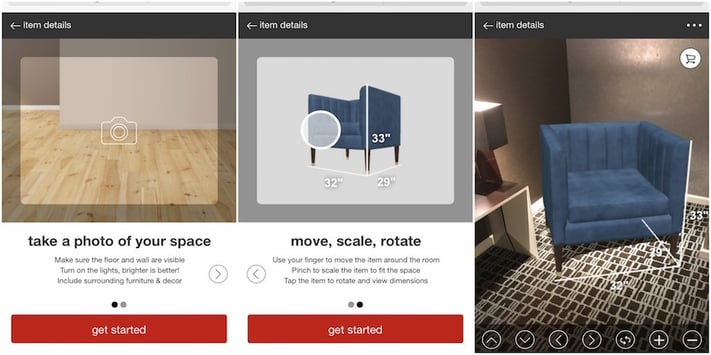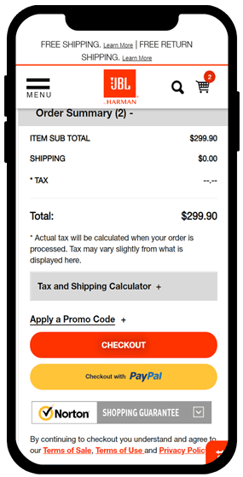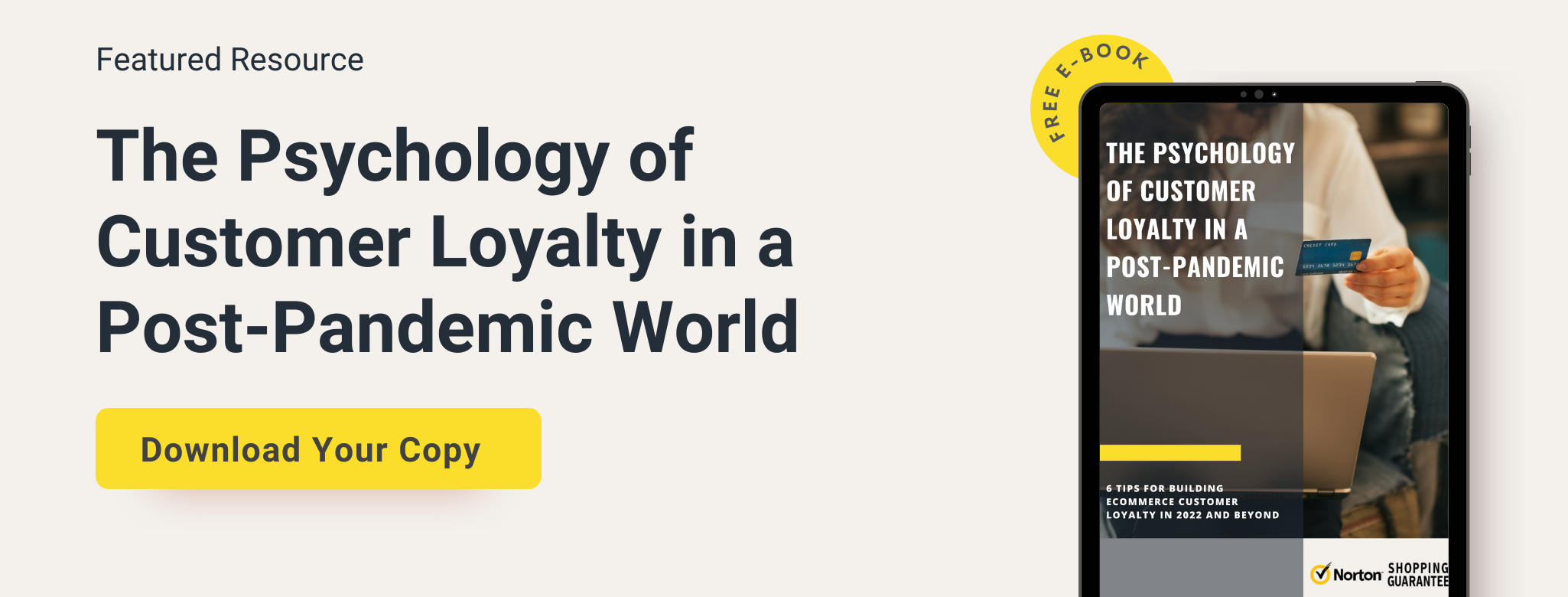

For the latest on ecommerce tips and best practices.
5 Ecommerce Trends That Will Impact Online Merchants in 2022

What will be the hottest ecommerce trends of 2022? We explore the effects of the pandemic, and reveal how new technology is changing online shopping behavior. Discover our top tips for how retailers can remain competitive through 2022 and beyond.
Ecommerce Trend 1: Supply chain woes continue to affect the ecommerce industry
Global logistics took one of the biggest hits at the start of the pandemic, and the industry is still a long way from fully recovering. As of January 2022, ocean shipping rates remain 8-9 times higher than pre-pandemic. Meanwhile, port congestion continues to slow the pipeline. Shipments are still taking up to 85% longer to reach their final destination.
All this means increased scarcity and slower delivery times. Consumers have gotten used to empty shelves and delayed shipping. But shortages still spell trouble for ecommerce retailers. As we move into 2022, adapting to these constraints may mean completely overhauling key business practices.
One side effect of the global shipping crisis is greater awareness of international supply chains. Combined with renewed focus on workers’ rights, consumers are voting with their wallets. Two-thirds of American consumers would switch brands to offset carbon emissions. Brands that commit to sustainable practices and fair wages are reaping the rewards.
Shoppers can choose to opt out of global supply chains and mega corporations by favoring local, independent businesses. A survey by QuickBooks found that 93% of shoppers think supporting local businesses is more important than ever since the start of the pandemic. And almost two-thirds of consumers are using online sources to find local suppliers for the goods they want.
While shifting shopping habits pose problems for some retailers, they also offer solutions. Sourcing and selling locally could help many retailers overcome global supply chain disruptions.
Ecommerce Trend 2: Zero-party data increases value for ecommerce retailers
Another area of ethical concern for shoppers is data privacy. In the EU, Canada, and California, new laws demand transparency about data harvesting. Apple gave users the ability to opt out of data tracking with iOS 14.5. And Google remains committed to ending support for third-party cookies.
While welcome news for consumers, these changes spell widespread disruption for ecommerce retailers. It will only get harder from here to track buyers and collect user data. That means diminished returns from online advertising. Snap, Facebook, Twitter, and YouTube lost out on an estimated $9.85 billion in ad revenue after iOS 14.5 launched.
All these changes lead to one inevitable outcome. The responsibility for data collection and usage must return to ecommerce stores themselves. It's going to get harder for ecommerce stores to measure their own businesses. Simple tools like Google Analytics that many ecommerce stores rely on to understand and run their businesses are being heavily scrutinized. Zero-party data collected directly by the vendor will become increasingly valuable as a result. Switching on independent data collection methods now can future-proof brands against further legislation. It could even help businesses opt out of power struggles among the tech giants.
Ecommerce Trend 3: Augmented reality competes with in-store browsing
One big advantage of physical stores is the ability to view products in person. Now online retailers are using augmented reality to replicate this experience, or even improve it. All shoppers have to do is turn on their phone camera to “try out” a product with AR.

Target uses augmented reality to help customers see what furniture will look like in their home.
Technology is making online shopping feel more hands-on and engaging, and buyers are embracing the change. Ecommerce platform Shopify reported that including 3D/AR content increased conversions by 94%. And as the technology improves, it will become easier and easier to add AR to online stores.
Ecommerce Trend 4: The rise (and fall) of online marketplaces
The relationship between ecommerce retailers and online marketplaces has always been complicated. While Amazon, Walmart, eBay and Etsy have helped countless small brands reach huge audiences, that visibility comes at a cost. Sellers face rising fees that can dramatically impact the cost of doing business.Marketplace selling also means investing in another brand’s ecosystem. One algorithm change can undo all that work. It’s why brands like Nike have withdrawn from online marketplaces in favor of their own stores. Yet consumers consistently report that they prefer shopping on marketplaces. Seventy percent of consumers say marketplaces are the most convenient way to shop online. And the highest value online shoppers use marketplaces the most.
Smaller retailers struggle to compete with the convenience, speed, and reliability of marketplaces. Online stores that want to break free need to improve consumer experience and build trust in their brand and products. Hosting a fast, intuitive website is critical to keeping customers engaged. Streamlining processes like one-page checkouts and payment gateways are also vital.
To increase customer confidence, ecommerce retailers need to be transparent. Be clear about shipping costs and times, and make returns policies prominent. Displaying a third-party guarantee like a Norton Shopping Guarantee trust badge can also boost confidence and drive conversions.
Norton Shopping Guarantee offers three guarantees that address the main concerns of online shoppers:
- $100 Lowest Price Guarantee — gives shoppers the confidence to buy immediately rather than wait for a sale
- $1,000 Purchase Guarantee — covers items that don’t arrive, eliminating shipping and logistics concerns
- $10,000 Identity Theft Protection — helps shield buyers from identity and financial fraud

Premium speaker brand, JBL uses the Norton Shopping Guarantee to increase conversions and consumer confidence. In a recent case study, 83.4% of customers said Norton Shopping Guarantee helped them feel more confident in their purchase and 90.83% said the guarantee makes them more likely to shop at this store again.
Ecommerce Trend 5: Omnichannel customer experience meets social commerce
It’s official, omnichannel marketing is here to stay. Customers want to browse online, collect in store, and manage returns through email. But a true omnichannel customer experience isn’t just about retailers having a social media account. It’s about creating seamless customer interactions, wherever that customer chooses to interact.
Omnichannel strategies could also help ecommerce retailers to break free of traditional marketplaces and carve out new, less contested niches. Astonishingly, 44% of Instagram users said they used the app to shop on a weekly basis. Instagram has a greater advertising reach than even Facebook. And 90% of users follow at least one brand. Social commerce is an emerging niche but it’s already revolutionizing the ecommerce industry.
Right now, the barrier to entry is incredibly low. Facebook Shops offer simple, low fees and built-in payment processing. That makes selling on Facebook and Instagram easy and convenient. But don’t expect this to last. Like all the major marketplaces, expect social commerce platforms to ramp up fees in the future. However, social commerce is anticipated to cross $79 billion by 2025, and savvy retailers could find success by getting in on this hot new trend.
The Future of Ecommerce Trends in 2022
This year will continue to be dominated by COVID-19. But three years into the pandemic, online retailers are recovering from early missteps when demand increased and supply dried up. By pivoting to embrace new opportunities and the latest technology, the future of ecommerce trends for 2022 look bright.
Stay in the know
Subscribe to the Norton Shopping Guarantee blog and receive the latest in ecommerce best practices.




-1.png)